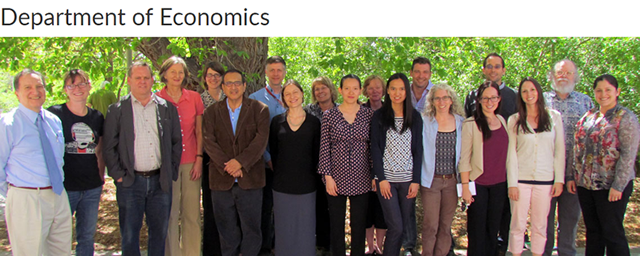
Economics ETDs
Publication Date
1-30-1973
Abstract
With the increasing number of problems impacting higher education today, several efforts have been undertaken at the national, state and institutional levels. All of these reactions to the growing problem situation usually result in increased information requirements. The ability to accurately project student enrollment is a requisite to proper planning, budgeting and management of higher education. The large growth rate of the 1960's has ceased and the current outlook for the 1980's is for slight enrollment declines. This situation makes the 1970's a most sensitive time for projecting enrollments. It is during these transitory times that many procedures and methods of forecasting break down and not only produce inaccurate results but produce false expectations regarding future enrollments. The subject of this paper is the description and evaluation of a student flow model used by the state of Washington to project enrollments for the complete higher education system. The current higher education system consists of six public universities and colleges, twelve private universities and colleges, and twenty-two public community college districts. The combined enrollments in 1971 from all these institutions is in excess of 200,000 students. The concept of student flow processes is compared against other existing methods of enrollment projection with strengths and weaknesses of the various methods discussed. The student flow enrollment projection model components and classification structure are extensively described as the classification system also serves as an information base as well as enrollment projection categories. The interaction of projection models and information bases are mutually supporting factors but moreover the model building process forces one to think in terms of information needs which in turn identifies and organizes the data elements. The mathematical formulation of the higher education enrollment projection model is patterned after a Markov chain. A transition matrix is composed of transition probabilities for moving from one state or enrollment status to another state in the next time period. This transition matrix is iteratively processed with an input vector containing base year enrollments and selected exogenous inputs. The projected results of the first year are used as input for the next year. The model has been tested with data collected from the fall 1969 term to the fall 1972 term. Since the model was developed in 1970 the first year of reasonably clean and complete data is 1971, hence experience with the model has basically been only two years. This period has also experienced considerable changes in enrollment levels and enrollment patterns both for the state of Washington as well as nationally. Measurements of student flows for this period has been most informative and some discussion is devoted to these recent experiences. Enrollment projections for the public universities and colleges are presented and compared against results from the previously used class succession technique. An evaluation of the results suggest agreement in the aggregate with large differences occurring in the institutional comparisons. The historical enrollment by class is included in the appendix along with summaries of the student flow projections for each institution. Also contained in the appendix is the development of the mathematical formulation of the student flow model.
Degree Name
Economics
Level of Degree
Masters
Department Name
Department of Economics
First Committee Member (Chair)
Gary Clyde Hufbauer
Second Committee Member
Alfred Leroy Parker
Third Committee Member
David Boyce Hamilton Jr.
Language
English
Document Type
Thesis
Recommended Citation
Weig, David W.. "Higher Education Enrollment Projection Model: A Description and Evaluation." (1973). https://digitalrepository.unm.edu/econ_etds/160
